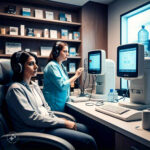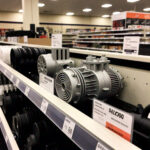1. Introduction
Networking is the cornerstone of professional growth and success. For decades, traditional business tools such as printed business cards, brochures, and flyers have dominated the networking scene. But as technology evolves, so do the methods of exchanging information. One of the most innovative solutions gaining traction is NFC (Near Field Communication) business cards. These smart, tech-driven tools promise to revolutionize the way professionals connect and share details.
This article explores whether NFC business cards can truly replace traditional business networking tools, delving into their features, advantages, limitations, and future potential.
2. What Are NFC Business Cards?
NFC business cards are digital cards embedded with Near Field Communication technology. This technology allows users to share information wirelessly with a simple tap against a compatible device, like a smartphone or tablet.
Key functionalities include:
- Sharing contact information.
- Linking to websites or portfolios.
- Triggering specific actions, such as downloading an app or signing up for a newsletter.
With an NFC card, there’s no need to carry a stack of printed cards or manually enter details into a phone. It’s instant, efficient, and increasingly popular.
3. Traditional Networking Tools: An Overview
Before diving into NFC cards, it’s essential to understand the traditional tools they aim to replace. These include:
- Printed Business Cards: Compact and easy to distribute, these cards have been the go-to for professionals.
- Flyers and Brochures: Detailed and visually appealing, often used during trade shows and conferences.
- Manual Contact Sharing: Verbal exchanges or jotting down details in notepads.
While these methods are familiar and reliable, they come with limitations like high printing costs, waste, and manual data entry errors.
4. Key Features of NFC Business Cards
Digital Interaction
NFC business cards enable a seamless digital connection. Users can transfer detailed contact information, links, and multimedia instantly without requiring an intermediary app.
Customization and Analytics
Unlike printed cards, NFC business cards can be dynamically updated. Users can:
- Edit shared details without reprinting.
- Track interactions and analyze data on card usage, such as the number of taps and the most popular links.
Environmental Impact
By eliminating the need for physical printing, NFC cards significantly reduce paper waste and the carbon footprint associated with traditional cards.
5. Advantages of NFC Business Cards Over Traditional Tools
Convenience and Speed
With NFC cards, networking becomes faster and easier. Instead of shuffling through stacks of cards or typing out details, users can:
- Tap the card to instantly share information.
- Save details directly to their phone contacts or CRM systems.
Enhanced Networking Opportunities
NFC cards enable:
- Integration with digital platforms like LinkedIn.
- Sharing multimedia content such as portfolios or promotional videos.
- Providing a more interactive and memorable networking experience.
Cost-effectiveness in the Long Term
While NFC cards have a higher initial cost, their reusability and durability make them more economical over time. Unlike traditional cards, they don’t need frequent reprinting.
6. Limitations of NFC Business Cards
Technology Adoption Rates
Not everyone has NFC-enabled devices or understands how to use them. This can hinder adoption in regions or industries less familiar with the technology.
Initial Costs
The upfront cost of purchasing NFC business cards can be a deterrent, especially for startups and small businesses.
Compatibility Issues
While most modern smartphones support NFC, some older models may not, creating potential challenges during networking events.
7. Comparing Use Cases: NFC Cards vs. Traditional Tools
| Feature | NFC Business Cards | Traditional Business Tools |
| Ease of Use | High (instant tap sharing) | Moderate (manual sharing) |
| Cost | Higher upfront, reusable | Low upfront, recurring costs |
| Environmental Impact | Eco-friendly | High waste |
| Customization | Dynamic updates | Static (requires reprinting) |
| Technology Dependency | Requires NFC-enabled device | None |
8. Industry Adoption Trends
Several industries are leading the way in adopting NFC business cards:
- Technology: Tech-savvy professionals use NFC cards to showcase their expertise and innovation.
- Creative Arts: Artists and designers use NFC cards to share portfolios and videos.
- Corporate: Large organizations employ NFC cards to enhance their branding and streamline networking.
Statistics show a steady rise in NFC card adoption, with professionals recognizing their potential to make impactful first impressions.
9. The Environmental Perspective
Switching to NFC business cards aligns with sustainable practices. Consider these benefits:
- Reduced Paper Waste: No need for constant reprints.
- Lower Carbon Emissions: Fewer resources are consumed in production.
- Reusable Materials: Many NFC cards are made from recyclable or durable materials.
10. What the Future Holds for Business Networking
As technology evolves, NFC cards could integrate with augmented reality (AR) and virtual reality (VR), creating immersive networking experiences. Imagine tapping a card to view a 3D business portfolio or connect instantly in virtual spaces.
However, for NFC business cards to replace traditional tools entirely, key challenges like universal adoption and cost barriers must be addressed. The future likely involves a hybrid approach, blending traditional and digital tools to cater to diverse networking needs.
11. Conclusion
NFC business cards represent a significant leap forward in networking technology. They’re fast, efficient, eco-friendly, and versatile, offering distinct advantages over traditional tools. However, challenges like adoption rates and compatibility must be tackled before they can fully replace conventional methods.
In the end, whether NFC business cards become the new standard depends on the willingness of professionals to embrace change and the accessibility of this technology across industries. For now, they’re a powerful addition to the modern professional’s networking toolkit.




